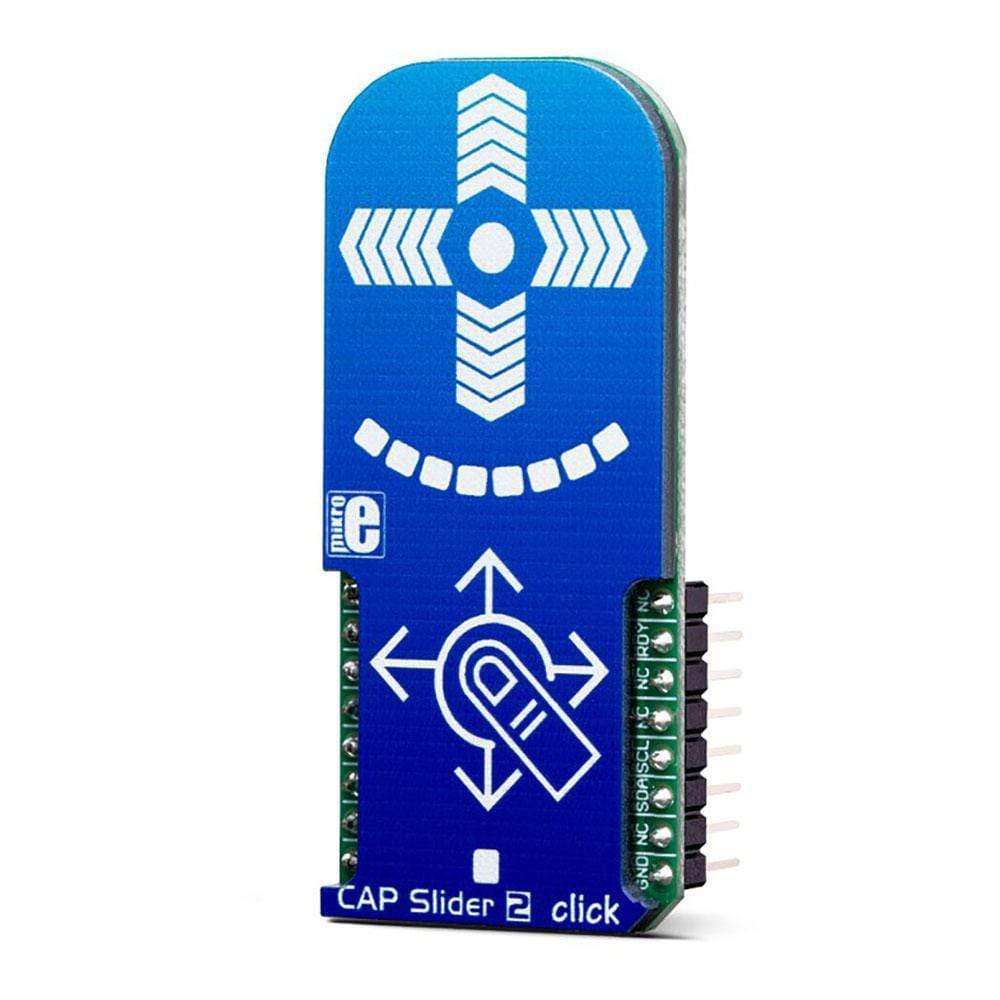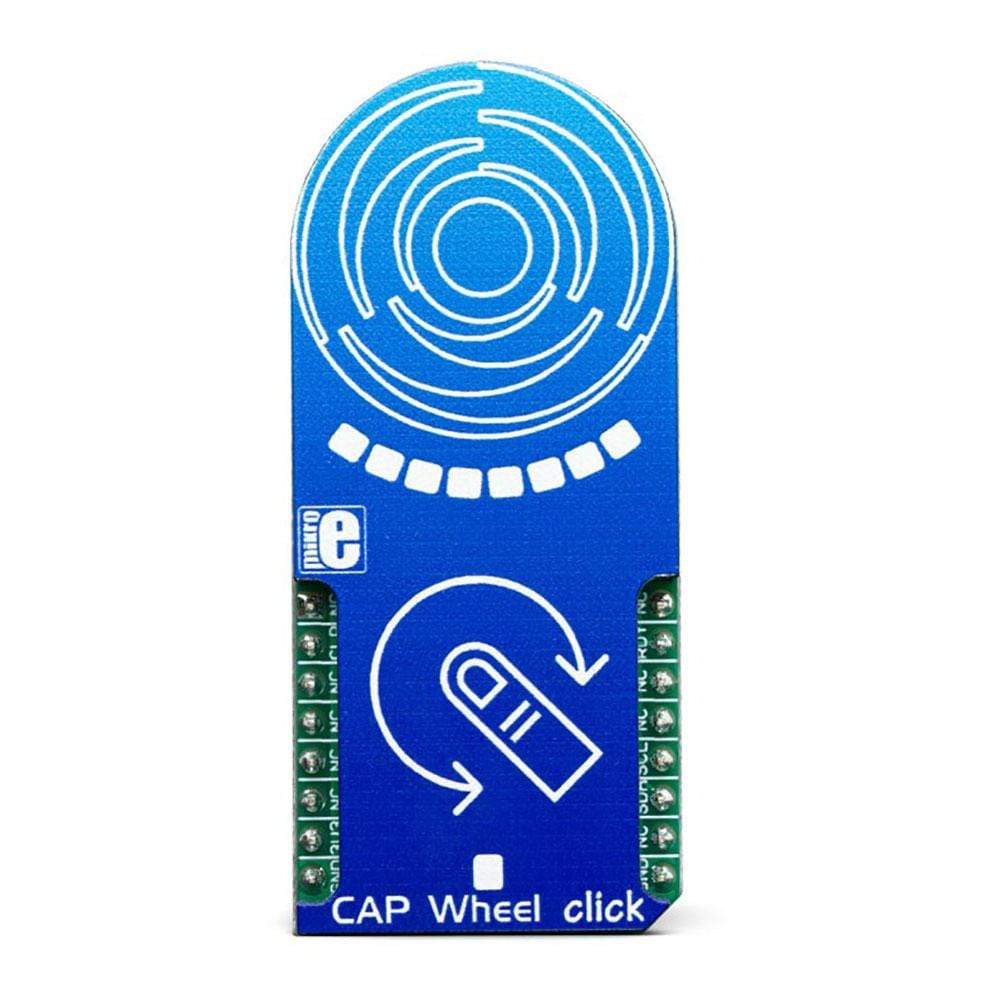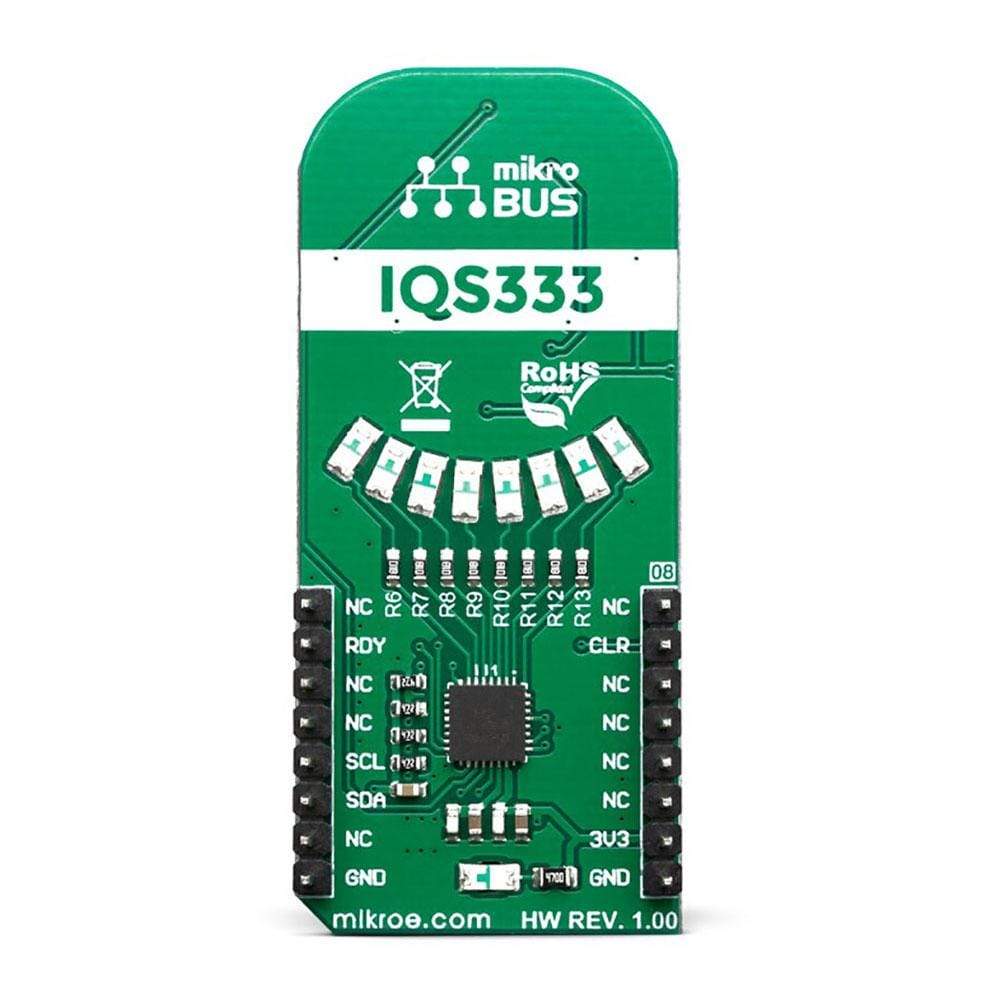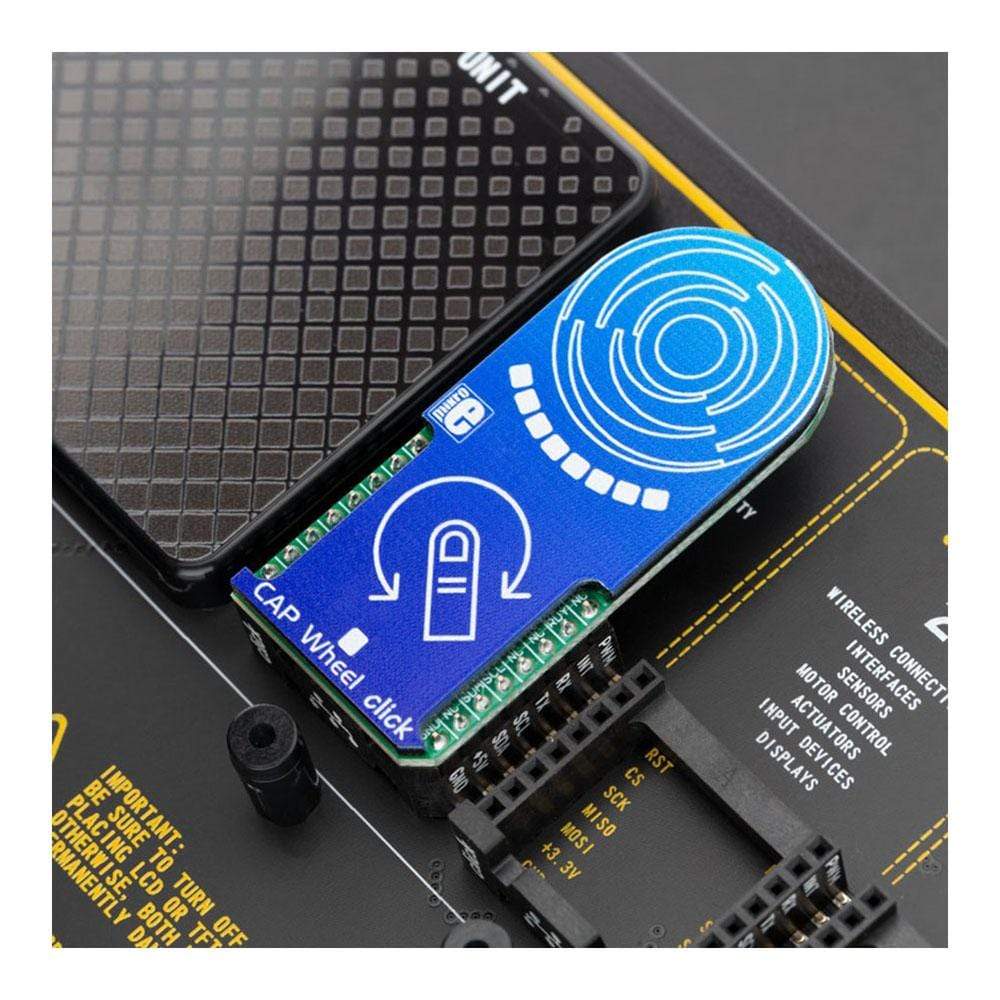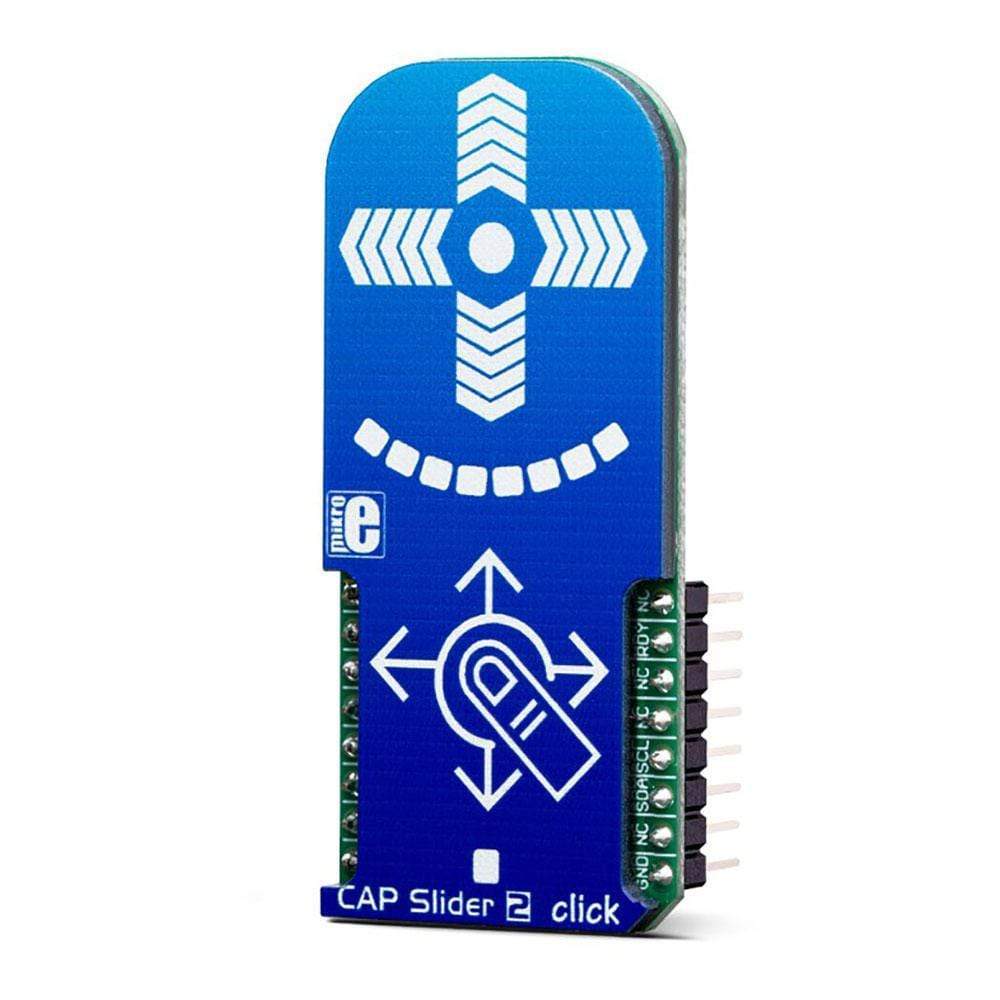
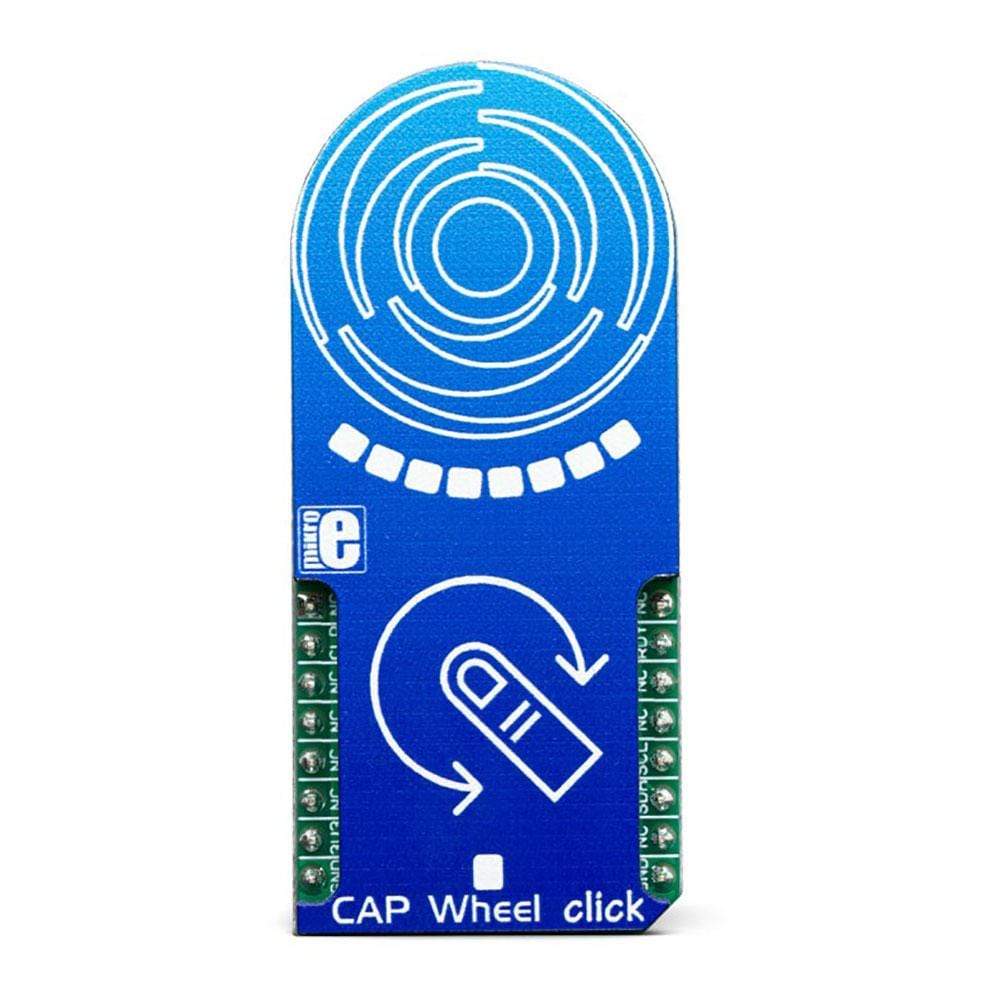
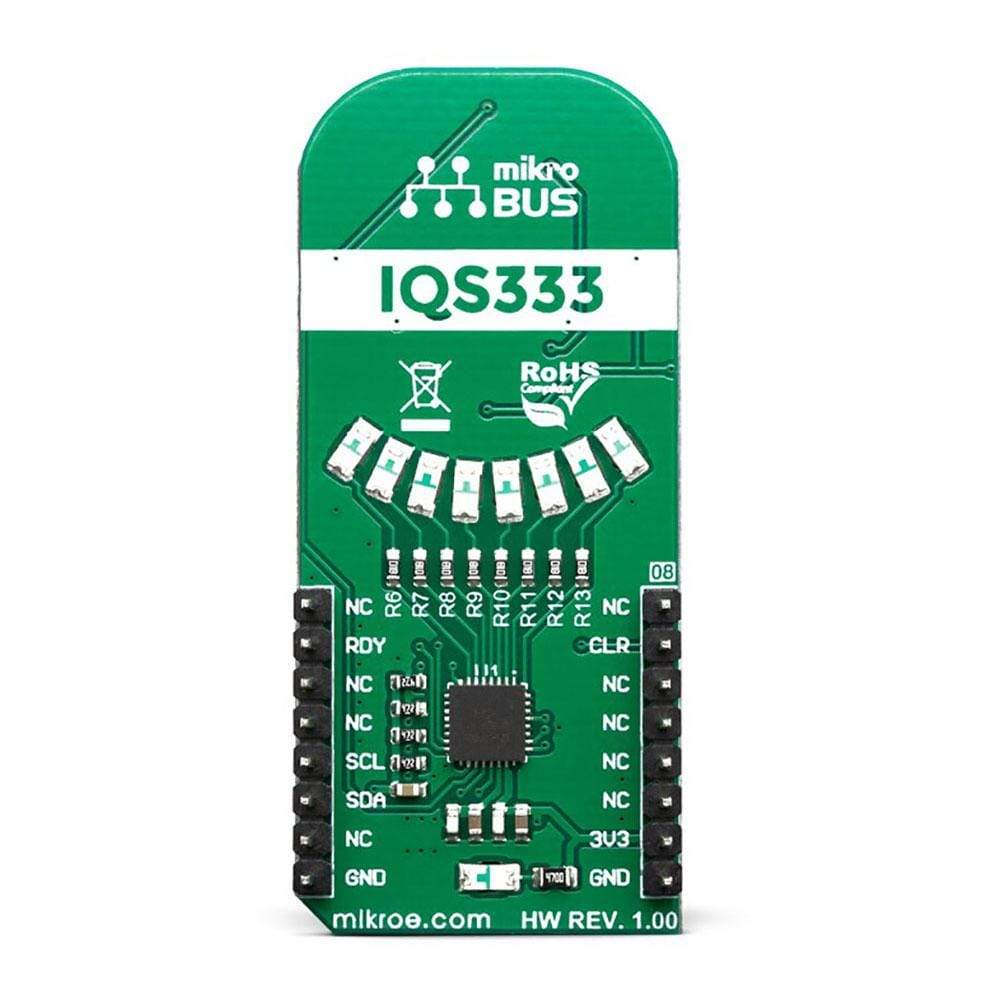
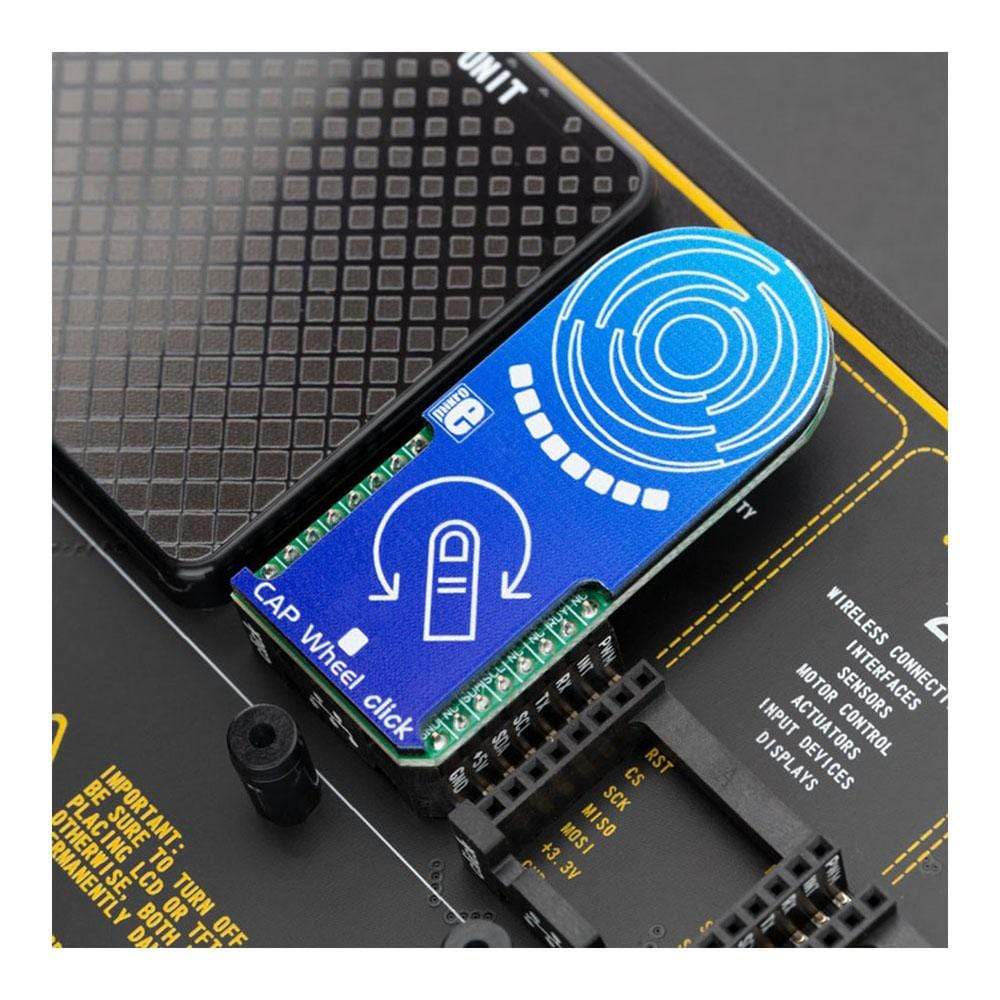
Overview
The CAP Wheel Click Board™ is a capacitive touch sensor with round-shaped electrodes integrated on a Click Board™. This Click Board™ can sense touch even through plastic, wood, or other dielectric materials, which can be used to protect the surface of the PCB and the sensor pad trace itself. Therefore, the CAP Wheel Click Board™ comes with an overlay, made of plexiglass. Unlike the mechanical button, the capacitive touch button lasts much longer, it is not prone to damage and wears over time and it is very reliable.
Downloads
Das CAP Wheel Click Board™ ist ein kapazitiver Berührungssensor mit runden Elektroden, die auf einem Click Board™ integriert sind. Dieses Click Board™ kann Berührungen sogar durch Kunststoff, Holz oder andere dielektrische Materialien hindurch wahrnehmen, die zum Schutz der Oberfläche der Leiterplatte und der Sensorpad-Leiterbahn selbst verwendet werden können. Daher wird das CAP Wheel Click Board™ mit einer Auflage aus Plexiglas geliefert. Im Gegensatz zum mechanischen Knopf hält der kapazitive Berührungsknopf viel länger, er ist nicht anfällig für Beschädigungen und Verschleiß im Laufe der Zeit und er ist sehr zuverlässig.
| General Information | |
|---|---|
Part Number (SKU) |
MIKROE-3203
|
Manufacturer |
|
| Physical and Mechanical | |
Weight |
0.025 kg
|
| Other | |
Country of Origin |
|
HS Code Customs Tariff code
|
|
EAN |
8606018715992
|
Warranty |
|
Frequently Asked Questions
Have a Question?
Be the first to ask a question about this.

